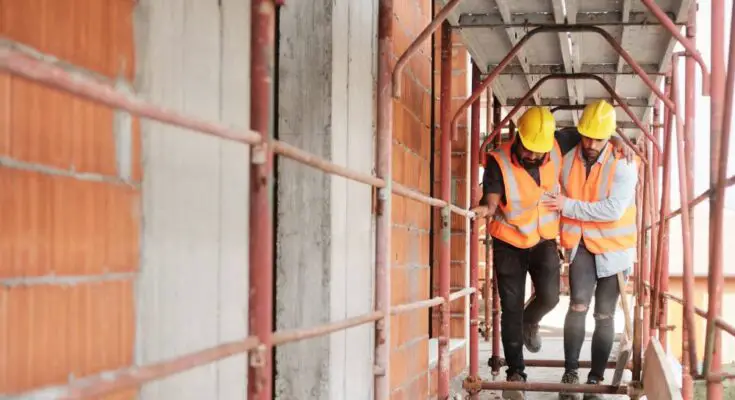Construction work is the backbone of modern infrastructure, responsible for everything from towering skyscrapers to remarkable bridges. While construction sites are often bustling with progress and innovation, they can also be fraught with hazards that put workers at risk. In this article, we’ll explore the hidden dangers of working in construction to raise awareness and better protect those who build the world around us.
Noise-Induced Hearing Loss
Noise-induced hearing loss is a prevalent yet often overlooked danger of construction sites. The constant roar of heavy machinery, pounding of hammers, and buzz of power tools create an environment where noise levels frequently exceed safe limits.
Prolonged exposure to such high decibel levels can lead to permanent hearing damage without proper protective gear like earplugs and earmuffs. Workers must remain aware of the noise levels around them so they can take appropriate precautions.
Heat Stress and Dehydration
Many construction sites are outdoors, which means workers are often exposed to extreme temperatures. Working long hours under the scorching sun without adequate breaks or hydration can cause fatigue, dehydration, heat stress, dizziness, and even heat stroke.
Workers must stay hydrated and take regular breaks in shaded areas. However, it’s also up to employers to provide ample water and cooling stations to ensure everyone’s well-being.
Vibration-Related Injuries
Vibration-related injuries are another peril on construction sites. Prolonged use of vibrating tools such as jackhammers, drills, and grinders can lead to conditions like hand-arm vibration syndrome (HAVS), which is a painful, often hidden danger on construction sites.
HAVs and other vibration-related injuries cause tingling, numbness, and muscle weakness in the hands and arms, significantly affecting a worker’s ability to perform tasks and reducing their overall quality of life. To mitigate these risks, workers should take regular breaks and employers should provide anti-vibration gloves to reduce hand-arm vibration.
Ergonomic Injuries From Repetitive Tasks
Repetitive tasks on construction sites can often lead to ergonomic injuries. Actions like lifting heavy materials, bending, or twisting can strain muscles, tendons, and ligaments, resulting in conditions such as tendinitis, bursitis, or lower back pain.
To prevent these injuries, employers should provide ergonomic, quality tools, but this isn’t always enough. Some repetitive tasks require specific machinery like clamps and slab lifting equipment, which can benefit construction workers by reducing ergonomic injury risk.
Prioritizing worker safety through proper training, protective gear, and a supportive work environment protects those who build our infrastructure and enhances well-being. Let’s commit to creating a culture where safety comes first, ensuring that construction workers can carry out their essential tasks without compromising their health and safety.



